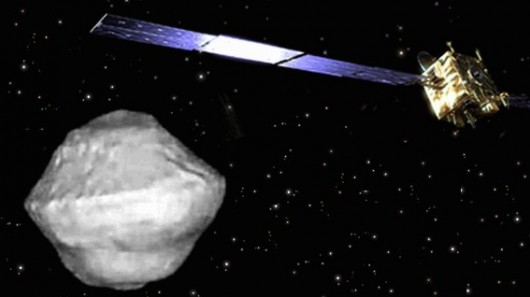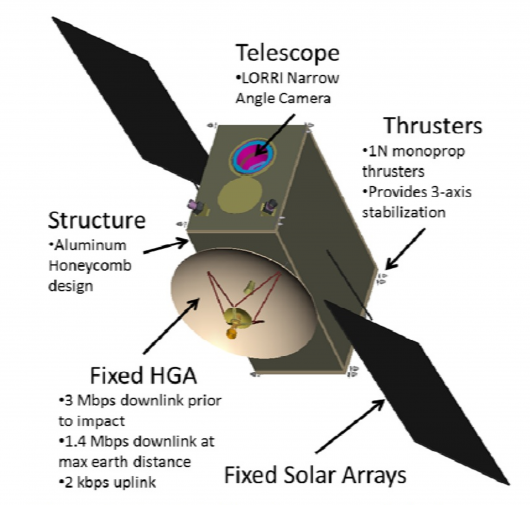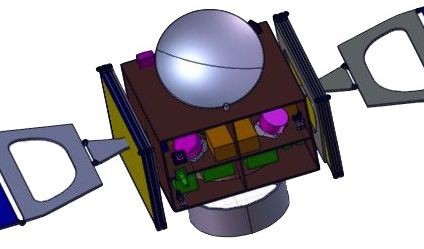ESA to test asteroid deflection
By David Szondy
January 16, 2013

Artist’s concept of the US-European Asteroid Impact and Deflection mission (AIDA)
When you’re trying to keep a rogue asteroid from hitting Earth, you’d better get it right the first time. With this in mind, the European Space Agency (ESA) is looking for new ideas to help develop a US-European asteroid deflection mission. With a target date of October, 2022, the purpose of the mission is to send a pair of spacecraft to a near-Earth asteroid where one will impact it while the other observes the effect.
Dubbed the Asteroid Impact and Deflection mission (AIDA), it's part of ESA’s Space Situational Awareness (SSA) program, which is also seeking ground-based and space-based ideas for ways to study and evaluate how to deflect asteroids.
“AIDA offers a promising platform for the test and demonstration of different deflection methods,” said Detlef Koschny, manager of SSA’s near-Earth object effort. “It is therefore important to ask the users early on what they’d like to do with a mission like this.”
Johns Hopkins' Double Asteroid Redirection Test (DART) spacecraft (Image: Johns Hopkins University)
AIDA’s purpose is to investigate the physics of high-speed collisions between spacecraft and asteroids. The idea is to send two spacecraft to a binary asteroid. That is, two asteroids where the smaller orbits around the larger. The spacecraft would consist of a Double Asteroid Redirection Test (DART) craft designed by the US Johns Hopkins Applied Physics Laboratory. This carries only an imager for targeting, because its job is to act as a projectile to deflect an asteroid. The second craft is the Asteroid Impact Monitor (AIM) built by ESA. It would survey the asteroid and record events before and after the collision.
“The advantage is that the spacecraft are simple and independent,” says Andy Cheng of Johns Hopkins, leader of the U.S. side of AIDA. “They can both complete their primary investigation without the other one.”
ESA's Asteroid Impact Monitor (AIM) craft
The plan is to target the binary near-Earth asteroids named Didymos. Their collision with DART would be timed to take place when the asteroids are close enough to Earth for easy ground observation, while AIM records the action at the scene. DART would strike the secondary member of the pair, which is 150 meters (492 ft) in diameter. DART is estimated to weigh over 300 kilograms (661 lb) and would be moving at a relative velocity of 6.25 km/sec (13,980 mph, 22,500 km/h).
At that speed, the collision would be an example of “hypervelocity impact.” DART would hit the asteroid so hard that the materials at the impact point would turn into plasma. That’s a very hard hit, but the question remains ... how much would an asteroid be deflected by such a collision? For this reason, the AIDA team have chosen a binary asteroid pair, which makes the deflection easier to measure and evaluate because of the weaker gravitational forces involved. The hope is to deflect the target by 0.5 to 1 percent.
ESA says that the AIDA project has other uses than asteroid deflection. It can also give insights into the history of the early Solar System, and the threat posed by space debris.
Sources: ESA, EPSC Absracts (PDF)
Copyright © gizmag 2003 - 2013 To subscribe or visit go to: http://www.gizmag.com

